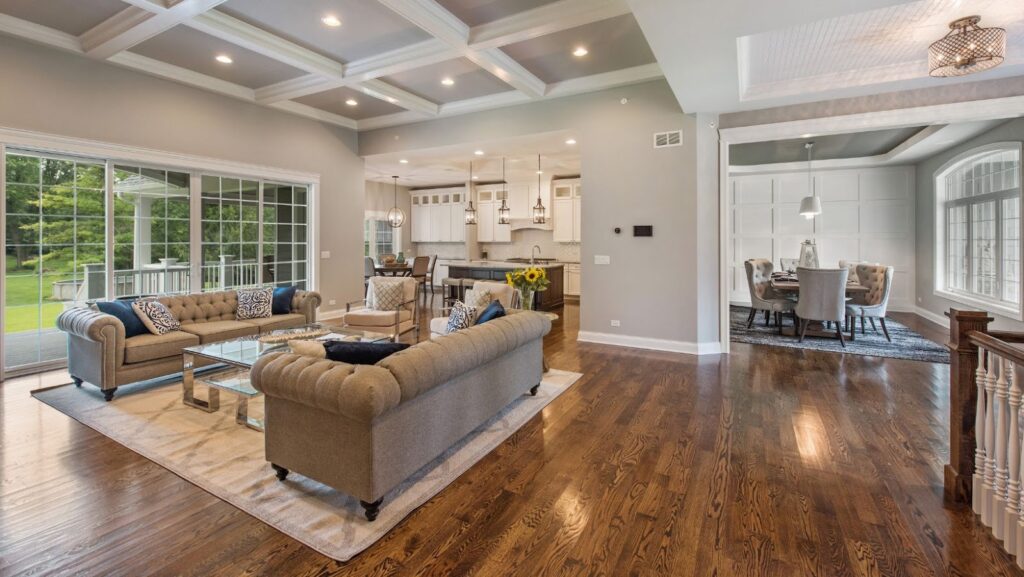Welcome to our guide on hardwood flooring in Toronto! In this article, we’ll explore everything you need to know about hardwood flooring toronto, from its types and categories to installation tips and maintenance advice. Whether you’re renovating your home or considering hardwood flooring for a new construction project, this guide will provide you with valuable insights to make informed decisions.
Types and Categories
Hardwood flooring comes in various types and categories, each offering unique characteristics and aesthetics:
- Solid Hardwood: Made from a single piece of wood, solid hardwood is durable and can be sanded and refinished multiple times.
- Engineered Hardwood: Constructed from multiple layers of wood veneers, engineered hardwood is more resistant to moisture and temperature fluctuations.
- Exotic Hardwood: Exotic hardwood species such as Brazilian cherry or tigerwood offer distinctive grain patterns and colors, adding elegance to any space.
- Domestic Hardwood: Species like oak, maple, and hickory are popular choices for domestic hardwood flooring, and they are known for their durability and versatility.
- Reclaimed Hardwood: Salvaged from old buildings or structures, reclaimed hardwood provides a rustic charm and environmental sustainability.
Symptoms and Signs
Recognizing the signs of hardwood flooring issues can help you address them promptly:
- Warping or Cupping: Moisture imbalance can cause hardwood planks to warp or cup, indicating the need for proper moisture control.
- Scratches and Dents: Heavy foot traffic or furniture movement can result in scratches and dents on the surface of hardwood floors.
- Gaps Between Planks: Seasonal changes in humidity levels may cause gaps to develop between hardwood planks, requiring maintenance to prevent further expansion.
- Fading or Discoloration: Prolonged exposure to sunlight can cause hardwood floors to fade or change color over time, necessitating protective measures.
- Squeaking or Creaking: Loose floorboards or subfloor issues can lead to squeaking or creaking noises when walking on hardwood floors.
Causes and Risk Factors
Understanding the factors that can impact hardwood flooring is essential for its longevity:
- Moisture Exposure: Excessive moisture from spills or leaks can damage hardwood floors, leading to warping, mold growth, and decay.
- Temperature Fluctuations: Extreme temperature changes can cause expansion and contraction of hardwood planks, potentially causing gaps or cracks.
- Heavy Foot Traffic: High-traffic areas are prone to wear and tear, resulting in scratches, dents, and surface damage to hardwood floors.
- Improper Installation: Incorrect installation techniques or inadequate acclimation of hardwood planks can result in issues such as buckling or unevenness.
- Lack of Maintenance: Neglecting regular cleaning, refinishing, or sealing can diminish the appearance and integrity of hardwood flooring over time.
Diagnosis and Tests
When encountering hardwood flooring issues, professional diagnosis and testing may be necessary:
- Moisture Testing: Moisture meters can assess the moisture content of hardwood floors and subfloors to identify potential moisture-related problems.
- Inspection for Damage: Visual inspection by flooring experts can detect signs of damage such as warping, cupping, or surface imperfections.
- Subfloor Assessment: Evaluating the condition of the subfloor is crucial to ensure proper support and stability for hardwood flooring installation.
- Surface Analysis: Microscopic analysis of hardwood floor surfaces can reveal details about wear patterns, finish quality, and potential refinishing needs.
- Environmental Factors: Consideration of environmental conditions such as humidity levels, temperature variations, and sunlight exposure is essential for diagnosing hardwood flooring issues.
Treatment Options
Addressing hardwood flooring problems requires appropriate treatment options:
- Refinishing: Sanding and refinishing hardwood floors can restore their appearance by removing surface scratches, stains, and imperfections.
- Moisture Remediation: Installing moisture barriers, improving ventilation, or addressing underlying plumbing issues can mitigate moisture-related damage to hardwood flooring.
- Repairs and Replacements: Repairing damaged planks, filling gaps, or replacing sections of hardwood flooring may be necessary for extensive or irreversible damage.
- Sealant Application: Applying sealants or coatings can protect hardwood floors from moisture, scratches, and UV damage while enhancing their durability and longevity.
- Professional Restoration: Hiring experienced flooring professionals ensures proper diagnosis and comprehensive restoration of hardwood flooring issues.
Preventive Measures
Taking proactive measures can help prevent hardwood flooring problems in the future:
- Maintain Optimal Indoor Conditions: Control humidity levels and temperature settings to minimize moisture-related issues and wood movement.
- Use Protective Measures: Place area rugs or furniture pads in high-traffic areas to reduce wear and prevent scratches on hardwood floors.
- Clean Regularly and Gently: Use soft-bristle brooms or vacuum cleaners with hardwood floor attachments to remove dust and debris without scratching the surface.
- Avoid Harsh Chemicals: Use mild, pH-neutral cleaners specifically formulated for hardwood floors to avoid damaging the finish or causing discoloration.
- Schedule Professional Inspections: Regular inspections by flooring professionals can identify potential issues early and prevent costly repairs or replacements.
Personal Stories or Case Studies
Here are a few personal stories showcasing the importance of proper hardwood flooring maintenance and care:
- Sarah’s Renovation Mishap: Sarah shares her experience of neglecting regular hardwood floor maintenance, resulting in extensive water damage and costly repairs.
- Mike’s DIY Disaster: Mike recounts his attempt to refinish hardwood floors without proper equipment or expertise, leading to uneven surfaces and visible imperfections.
- Emily’s Flooring Triumph: Emily describes her successful hardwood flooring installation project, highlighting the benefits of professional guidance and quality materials.
Expert Insights
We spoke to flooring experts to gather their insights on hardwood flooring maintenance and restoration:
- Dr. James Anderson, Flooring Specialist: “Proper moisture control and regular maintenance are key to preserving the beauty and integrity of hardwood flooring.”
- Lisa Roberts, Interior Designer: “Consider the long-term durability and aesthetic appeal of hardwood flooring when planning your home improvement projects.”
- David Johnson, Restoration Contractor: “Seek professional assistance for hardwood flooring repairs and refinishing to ensure optimal results and minimize future problems.”
Conclusion
In conclusion, hardwood flooring offers timeless elegance and durability for homes and commercial spaces alike. By understanding the types, symptoms, causes, and treatment options for hardwood flooring issues, you can effectively maintain and preserve your investment for years to come.

